Learning Objectives
Identify and understand how to use at least five different organizing principles for a speech.
There are many different ways to organize a speech, and none is “better” or “more correct” than the others. The choice of an organizing principle, or a core assumption around which everything else is arranged, depends on the subject matter, the rhetorical situation, and many other factors, including your preference as speaker.
The left column of Table 12.5.1 presents seventeen different organizing principles to consider. The center column explains how the principle works, and the right column provides an applied example based on our sample speech about the First Transcontinental Railroad. For example, using a biographical organizing principle, you might describe the journey of the Lewis and Clark expedition in 1804, the signing of the Pacific Railroad Act in 1862, and the completion of the first Transcontinental Express train trip in 1876. As another example, using a spatial organizing principle, you might describe the mechanics of how a steam locomotive engine works to turn the train wheels, which move on a track to travel across distances.
As you read each organizational structure, consider how the main points and subheadings might be changed or adapted to fit each pattern.
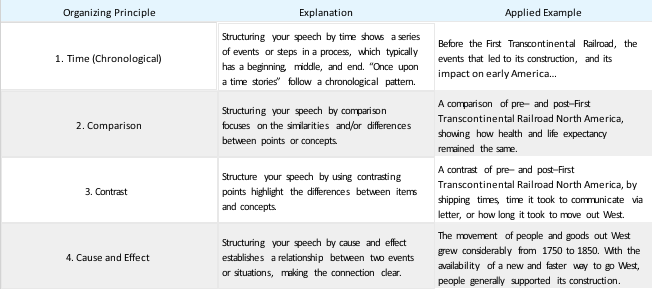

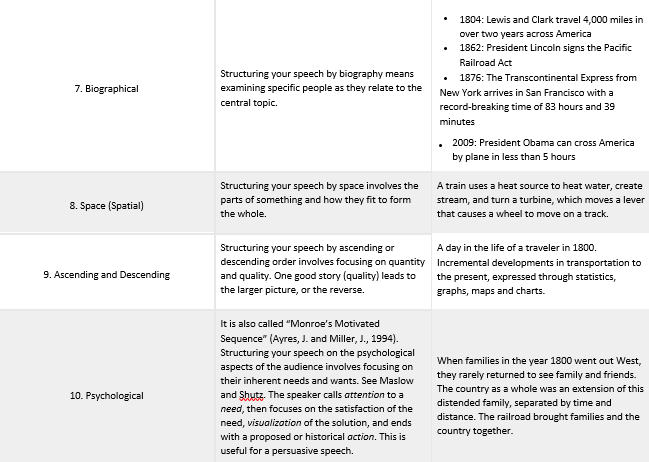
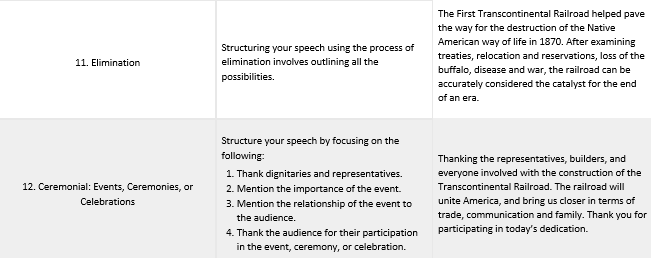
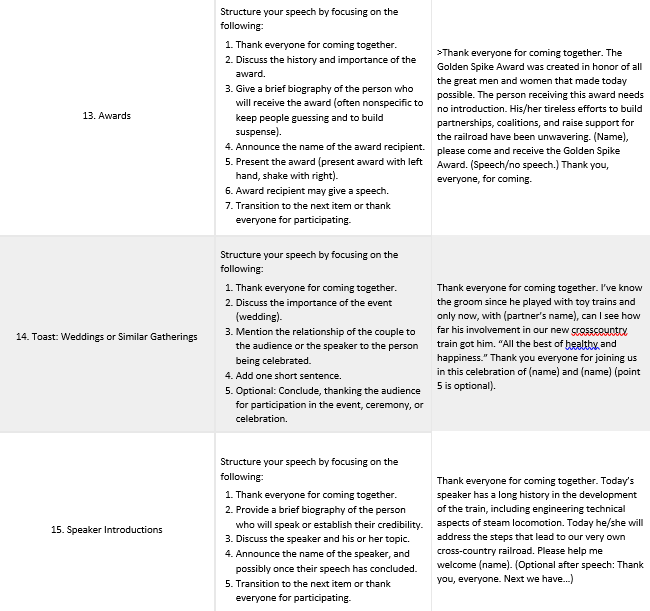
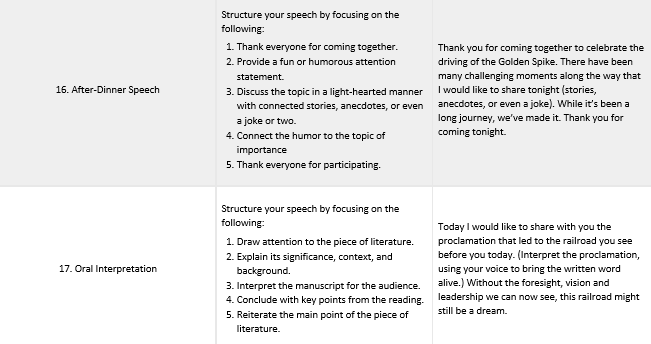
Key Takeaway
A speech may be organized according to any of many different organizing principles.
Exercises
Choose at least three different organizing principles from the left column of Table 12.5.1. Take the thesis of a speech you are preparing and write an applied example, similar to the ones provided about the First Transcontinental Railroad that shows how you would apply each of your chosen organizing principles to your speech.
Think of one technology or application that you perceive has transformed your world. Choose two organizing principles and create two sample outlines for speeches about your topic. Share and compare with classmates.
Ayres, J., & Miller, J. (1994). Effective public speaking (4th ed., p 274). Madison, WI: Brown & Benchmark.
Maslow, A. (1970). Motivation and personality (2nd ed.). New York, NY: Harper & Row.
Shutz, W. (1966). The interpersonal underworld. Palo Alto, CA: Science and Behavior Books.
This page titled 12.5: Organizing Principles for Your Speech is shared under a CC BY-NC-SA 3.0 license and was authored, remixed, and/or curated by Anonymous (LibreTexts Staff), from which source content was edited to the style and standards of the Pressbook platform licensed under a Creative Commons Attribution-NonCommercial-ShareAlike 4.0 International License by Brandi Schur.

